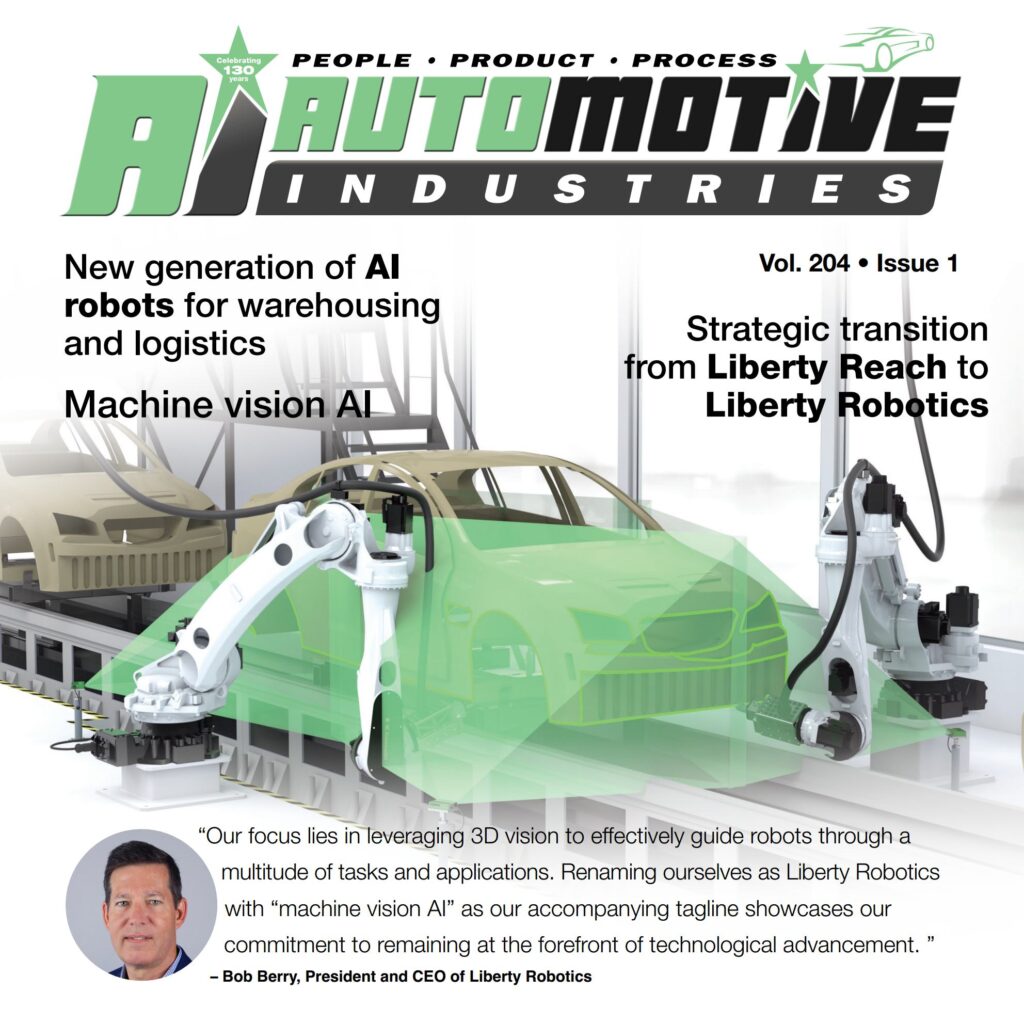
A new generation of autonomous robots is using 3D volumetric vision guidance systems to meet the demands of contemporary warehousing and logistics operations, which are in need of smarter automation solutions that are both efficient and dependable.
Liberty Robotics, a leading supplier of 3D volumetric vision guidance systems for robot applications, formerly known as Liberty Reach, has launched a suite of robotic palletizing and depalletizing solutions, VPick™ and VPack™, which use AI vision systems to enhance warehouse efficiency and reliability.
VPick™ intuitively guides robots in warehouse, distribution, and fulfillment centers. The system enhances warehousing processes with its accurate “pick on first sight” capabilities, achieving near 100% pick rates.
VPick™ is designed to pick from a diverse array of pallet types, including mono, mixed, and rainbow pallets, and supports a wide range of operations such as palletizing, depalletizing, and pallet decanting.
It provides reliable picking capabilities without the necessity for deep learning or pre-training box parameters.
Its design ensures consistent performance despite changes in ambient lighting, supporting high production speeds. The system includes four distinct features, each tailored to address different requirements in the material handling sector.
· Single pick of uniform box type: tailored for depalletization of single boxes, enhancing efficiency in material handling.
· Multi-pick of uniform box type: allows simultaneous depalletization of multiple boxes, optimizing throughput.
· Delayering of uniform box type: for delayering entire layers of boxes, ensuring seamless operation in high-volume environments.
· Single pick of mixed box type: adapts to varied box sizes within mixed pallets, maintaining precision and consistency.
VPack™ features ad-hoc picking capabilities and digital twin technology to support efficient operations.
VPack™ intuitively automates mono and mixed case palletizing operations in warehouse, distribution, and fulfillment centers. The VPack™ system measures box dimensions in milliseconds and determines the ideal location on a pallet or carrier without needing to pre-train box parameters.
Liberty Robotics also conducts custom palletizing simulations. VPack™ simulations generate thousands of stacking patterns, within minutes, to estimate fill efficiency and maximize pallet stability. The tests can be tailored to specific box parameters prior to running the system in production.
The proprietary software interface makes automating the palletizing process simple, efficient, and user-friendly. The system palletizes boxes of any dimension, color, and print feature for neatly packed, stable pallets.

Automotive Industries (AI) asked Bob Berry, President and CEO of Liberty Robotics, to elaborate on the vision behind Liberty Reach Inc.’s rebranding to Liberty Robotics Inc.
Berry: We’ve strategically chosen to transition from Liberty Reach to Liberty Robotics, as it more accurately represents the markets and applications we cater to.
Our focus lies in leveraging 3D vision to effectively guide robots through a multitude of tasks and applications.
This deliberate rebranding mirrors our evolving mission and underscores our strong dedication to innovation and excellence in the field of machine vision robotics.
Renaming ourselves as Liberty Robotics with “machine vision AI” as our accompanying tagline showcases our commitment to remaining at the forefront of technological advancement.
This shift in branding aims to better communicate our expertise, align with the essence of our work, and highlight our proficiency in the realms of machine vision and robotics.
AI: With Liberty Robotics expanding its focus beyond the automotive sector into warehousing and logistics, what specific technological advancements or adaptations are being made to cater for these new markets?
Berry: Liberty Robotics develops its own proprietary vision AI algorithms to support new applications. We are not utilizing “off the shelf” open-source code available to the public.
This allows us to expand our technology for automotive manufacturing applications and develop products for warehouse and distribution material handling applications.
With VPick™ and VPack™ utilizing proprietary AI algorithms, we have introduced the concept of “pick on first sight”, which means with our systems, you don’t have to continuously train images and run thousands of samples through the system to get reliable picks.
Our systems are designed to run quickly and efficiently from the outset.
We believe this gives us the upper hand. Additionally, we are actively innovating in the fields of optics and lighting technology, aiming to enhance the robustness and reliability of vision imaging significantly.
AI: How does Liberty Robotics plan to maintain its strong presence in the automotive industry while simultaneously exploring opportunities in other sectors like warehousing and logistics?
Berry: We feel there is still a lot of runway left for us in the automotive industry.
Our products V-Guide™ and VFix™ are used extensively in the automotive industry for robot guidance applications such as interior seam sealing, underbody sealing, closure hem sealing, as well as part handling, and pick and place applications.
We have enhanced our systems with new features to cater to emerging applications, leveraging both 2D and 3D imaging for expanded functionality.
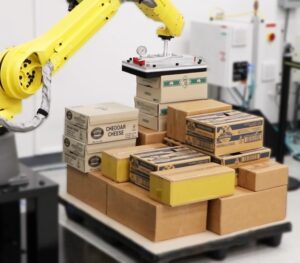
Through effective training of our integration partners, they have acquired the expertise to independently implement these systems, enabling seamless scalability and facilitating our expansion into new markets and applications.
AI: Please share some of the challenges Liberty Robotics faces in transitioning from automotive-focused solutions to broader applications in robotics, and how the company plans to overcome them.
Berry: Transitioning from automotive-based applications to other markets, such as warehousing and logistics with VPack™ and VPick™, certainly has its challenges.
Having lower market visibility in these areas has forced us to work hard to understand the specific needs and operating environments for this sector.
However, our rich history in the even more demanding automotive manufacturing environment has given us the ability to springboard successfully to meet the demands of warehousing and logistics customers.
We are investing in research and development to gain a deeper understanding of some of the vision techniques required.
This also means aligning with domain experts and industry partners to acquire specialized knowledge.
Furthermore, contending with entrenched competitors and well-funded startups presents additional hurdles.
These entities often leverage substantial investments to showcase their products through lavish trade show displays and marketing presentations, potentially misleading prospective clients about their factory floor experience, product reliability and efficacy.
Our countermeasure involves cultivating close partnerships with both our integration partners and end-users, prioritizing the delivery of superior performance tailored to their specific applications.
AI: What are the key factors driving innovation within Liberty Robotics?
Berry: First, is our customer-centric approach.
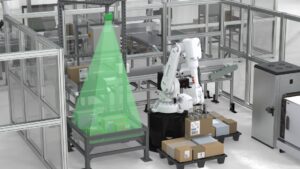
We place a strong emphasis on understanding the evolving needs and challenges of our customers.
By maintaining close relationships with customers and receiving feedback, we can address specific pain points and deliver maximum value.
Additionally, we prioritize the development of flexible and adaptable technology platforms that can be utilized across multiple product lines.
This provides for software efficiencies that allows us to get to market faster with our products.
Additionally, we have a culture of continuous improvement here at Liberty Robotics.
The company encourages experimentation, risk-taking, and learning from both successes and failures to iteratively enhance our products and processes.
Lastly, we recognize that our greatest asset is our people. We foster a culture of creativity, collaboration, and continuous learning, attracting top talent to fuel our innovation.
AI: What sets your applications aimed at enhancing robotic functionality in warehousing and logistics apart from existing solutions in the market?
Berry: Liberty Robotics has set its sights on emerging as the foremost global authority in 3D vision for box manipulation.
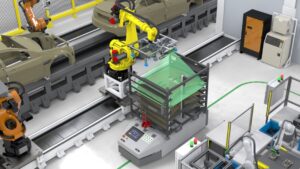
Our targeted applications encompass a wide spectrum, ranging from mixed and same SKU palletizing and depalletizing to container packing and picking, alongside robotic induction for automatic storage and retrieval systems (ASRS).
To set our technology apart, we employ a fusion of hardware and software techniques.
Central to our approach are proprietary AI vision algorithms enabling revolutionary features like “pick on first sight” and heightened picking and packing reliability.
Additionally, we’ve pioneered specialized vision lighting techniques that seamlessly integrate with our algorithms, enhancing overall performance.
We are excited about the growth opportunities we see in this market, and the tremendous feedback we are seeing from our end users and partners.
AI then asked Liberty Robotics Marketing Manager, Natalie Beia, how V-Guide™ revolutionizes the automotive industry’s approach to robotic guidance, particularly in terms of speed and versatility.
Beia: V-Guide™ is our proprietary, robot-mounted machine vision system that uses volumetric sensor technology, meticulously designed and field-tested to calculate part offsets in under one second.
Unlike traditional two-dimensional machine vision systems, V-Guide™ captures position and rotation data to give a comprehensive view of the part in 6DoF (six degrees of freedom).
Utilizing volumetric sensors, V-Guide™ calculates offsets in a single image captures step, as opposed to traditional two-dimensional systems that need multiple images of a part to provide offsets.
On average, two-dimensional systems also require four cameras and four lights per part style.
More hardware equals more complexity and more potential failure points. V-Guide™ is very efficient, in the sense that it only requires between 1-4 sensors depending on part size. Liberty Robotics systems have a very minimal footprint on an assembly line.
We do not need to add additional sensors for different part styles.
The software handles up to 1,000 different part styles to eliminate the need to add extra.
AI: Please explain how V-Guide™ overcomes common challenges in factory environments, such as lighting changes, and how this contributes to improved efficiency and reduced downtime.
Beia: All Liberty Robotics systems use volumetric sensors which operate outside of the visible light spectrum.
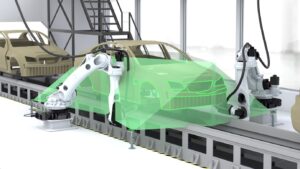
This makes the system immune to ambient light changes, which include flashing lights, dimmed lights, or even total darkness.
The sensors were also developed to withstand a variety of harsh factory conditions and continue to provide our industry-leading part offsets.
In situations where there may be overspray or material coming in contact with the sensor, we use custom HDX cases with pneumatic shutters to protect the sensor and the glass.
Our sensor’s robust design, combined with advanced volumetric technology and intuitive user-friendly software, delivers unparalleled accuracy and efficiency. By minimizing costly downtime caused by faults and errors in the manufacturing process, we ensure seamless operations and optimized productivity for our customers.
AI: V-Guide™ boasts the ability to handle up to 1,000 part styles. Please elaborate on the flexibility of the system and how it accommodates such a wide range of part variations.
Beia: We developed the system to handle multiple part styles in anticipation of future applications. Currently, in automotive we rarely use more than seven or eight styles, but V-Guide™ can handle more than enough part styles required.
AI: VFix™ is recognized as the fastest robot guidance system available. Please describe the specific technological advancements that enable such rapid offsets measurement.
Beia: Our software platform takes advantage of GPU processing power.
Many of the GPU boards available on the market were developed primarily for the gaming industry.
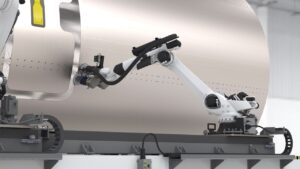
In that industry, you can imagine the need to process and manipulate full 3D geometry in near real time.
We were fortunate to see that adaptability of this technology for use in the industrial automation sector.
These fast processors are cost-effective and get better and faster every year.
AI: Similar to V-Guide™, how does VFix™ ensure robust performance in harsh factory conditions?
Beia: VFix™ systems are designed similarly to V-Guide™ and are used in applications like seam sealing, underbody sealing, and closure hem sealing.
The system uses the same volumetric sensor technology, intuitive software, and hardware.
We developed specialized enclosures with pneumatic shutters to protect our sensors from harsh environments.
We use all industrialized components, including cabling, PC, and control cabinets with proper air flow to withstand extremely high temperatures.
Our mounting stands for cameras are also designed to withstand high levels of force so they are not prone to being bumped out of position.
If a sensor is moved due to an unforeseen circumstance, the system has the intelligence to know that the position has changed, and then automatically calculates its new position to keep the line moving.
AI: Considering the ever-evolving needs of the automotive sector, how does Liberty Robotics stay ahead of the curve in terms of innovation and product development for both V-Guide™ and VFix™?
Beia: Liberty Robotics has always encouraged collaboration across all departments, and dually encourages employee suggestions for improvements and innovation.
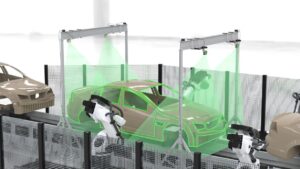
We employ a full-time R&D staff to continue to advance our new and existing systems.
It’s our goal to always stay two years ahead of our competition in terms of features and performance.
Liberty Robotics recognizes the evolving needs for automation technology to fulfill a broad number of tasks.
This is where our products stand out. Our machine vision systems are specifically designed for variety and flexibility.
The average system is easily installed, and users can expect to be able to maintain a system after just one day of training.
We truly value our customer feedback and we regularly incorporate their suggestions into our software releases and added features.
We want our customers to have the absolute best machine vision experience, and we know how important it is to keep our technology at the forefront of industry 4.0, while continuing to develop new technology for the industry 5.0 era.




More Stories
Contechs appoints Christopher Hilts as US Head of Business Development
Bostik focusing on adhesives and resins which support sustainability
Syensqo breakthroughs in sustainable composites support EV innovation